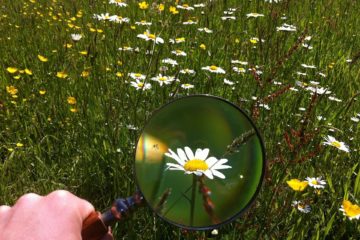As early childhood educators, you probably have so much experience guiding children as they explore the practice of comparing and contrasting, but did you know that even babies have surprisingly logical minds?
From the moment they are born, babies begin making comparisons. The first question they might ‘ask’ themselves: Is this my mother or is this not my mother? Other questions soon follow: Is this edible or not edible? Will doing this hurt me, or not hurt me? Making comparisons is the way that our brains sort information and order our interactions with the world.

The benefits of comparative thinking
Robert Marzano, Debra Pickering, and Jane Pollock (2001) found that strategies that engage students in comparative thinking can have a great affect on achievement, leading to average percentile gains of 45 points! Here are some of the benefits:
- Focuses child’s attention and encourages persistence.
- Creates memories that build background knowledge.
- Supports the application of past knowledge to new situations.
- Allows opportunity to practice higher order thinking skills
- Encourages flexible thinking.
- Helps to develop metacognitive strategies (thinking about thinking).
Getting Started!
Although making comparisons comes naturally, it is still a skill that needs to be practiced. The best way to encourage this in early childhood is to integrate comparative thinking into daily authentic explorations. I’ll be sharing strategies on the Enchanted Science blog that have worked for me in the classroom. Today’s technique I like to call:
Expand our View
Often students will have one picture in their mind of a concept; I will take trees as an example. If you ask a child to draw a tree, they will usually draw a poofy green cloud as the canopy and a brown rectangle as the trunk. This is fine, as neuroscience tells us it is important to have iconic images in our mind in order to efficiently store information. But in the early years there is great opportunity to expand student ideas and to grow their available background knowledge. The goal is never to have them memorize the names of all the trees, but to expand their idea of what a tree can be!

No matter what topic your class shows an interest in, there is always the opportunity to Expand our View. So how do you get started with this technique?
Question “cheats”
Well, not really cheating. Maybe just being creative in your thinking 🙂 You will find as you began practicing science exploration and inquiry in early childhood, most children’s questions do not come in a form that is testable. They will ask questions such as, ‘Why do birds fly?’, or ‘Why is the sky blue?’.
Here is my “One Trick that Always Works”: If you replace ‘why’ with ‘do all’, you’ve got an investigation on your hands.
Here are some examples:
Birds: Do all birds fly? Do all birds have feathers? Do all birds have beaks? Do all birds sing? Do all birds eat worms?
Trees: Are all trees triangle shaped or cloud shaped? Is all bark brown? Is all bark smooth? Are all tree leaves green in the summer? Do all leaves have veins?
Clouds: Are all clouds white? Are all clouds just out during the day? Do all clouds make rain?
Tips for Expanding our Ideas
- Always provide more than one example in order to create opportunity for comparison. This could mean two different varieties of oranges, or observing clouds on rainy days, or visiting every tree on campus!
- Use non-fiction books and videos to gather evidence on subjects that you cannot interact with in person.
- Record your observations using pictures, words, and compare and contrast organizers such as Top Hat, Venn Diagram, or a Y chart.
Comparative thinking strategies in early childhood are a natural part of learning about the world and how it works. Being intentional about modeling authentic compare and contrast opportunities will give students a leg up on a valuable skill!



0 Comments